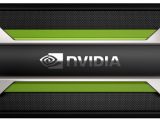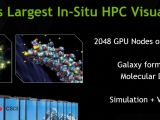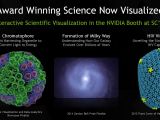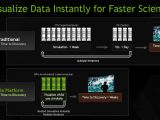Yesterday, we brought you news of the NVIDIA Tesla K80 supercomputer GPU compute accelerator, a card with a positively ludicrous GDDR5 memory capacity of 24 GB, among other things. The GK210 GPU, however, was largely unknown. This has now changed.
With the official launch of the card and NVIDIA's subsequent information released, it is now possible to paint a fairly accurate picture of what the GPU can offer us.
Well, maybe not us directly, since you'll never see the GK210 installed in any consumer GeForce video card, or even professional Quadro board.
However, the GPU compute accelerators based on it (just Tesla K80 for now) will be used by supercomputers whose task will be to improve all facets of human life and society. So we suppose we will benefit from it too, just not immediately and not personally. But we digress.
The Tesla K80 GK210 GPU
Based on the Kepler silicon, it has 2,496 CUDA cores, hence the total 4,992 on the Tesla K80, owing to the use of two chips.
The GPU has a GDDR5 memory interface of 384 bits, which has little issues handling the 12 GB of memory wired to it (24 GB in total on Tesla K80). The bandwidth is of 240 GB/s (hence the 480 GB/s of the K80).
One thing we weren't sure about yesterday (November 17, 2014) was the clock. Based on vague comments from the company, we assumed the normal frequency of the GPU was around 790 MHz and the boost state was of 875 MHz.
It turns out we were right about the latter, but not the former. If the system isn't stressed, the chip operates at only 562 MHz.
It actually makes a lot of sense. Supercomputers use a lot of energy by default, and they usually do have something or other to compute. When they're relatively idle, though, it can be a godsend if they can shear off the power requirements.
Having the GPU clock go down can go a long way, especially when the Tesla K80 is rated with a TDP of 300W (150W per GPU system).
Finally, the GK210 boasts a 512 KB register file for each of the 15 SMX (streaming multiprocessors), meaning that the number of variables a shader can use is twice that of the GK110 (in the single-chip Tesla K40).
What this all means for us normal people
There won't be any consumer graphics cards made from the GK210 because the way it's built is specifically geared towards parallel computing instead of drawing of virtual 3D environments, shaders, etc. Sure, Tesla K80 can render things in high detail, but the creators were more focused on displaying simulations and analyses in real time while having most of the chips' resources and associated memory working on millions of calculations in the background.
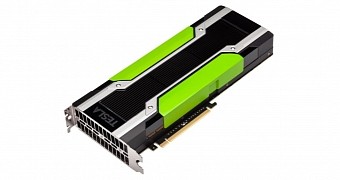
 14 DAY TRIAL //
14 DAY TRIAL // 
